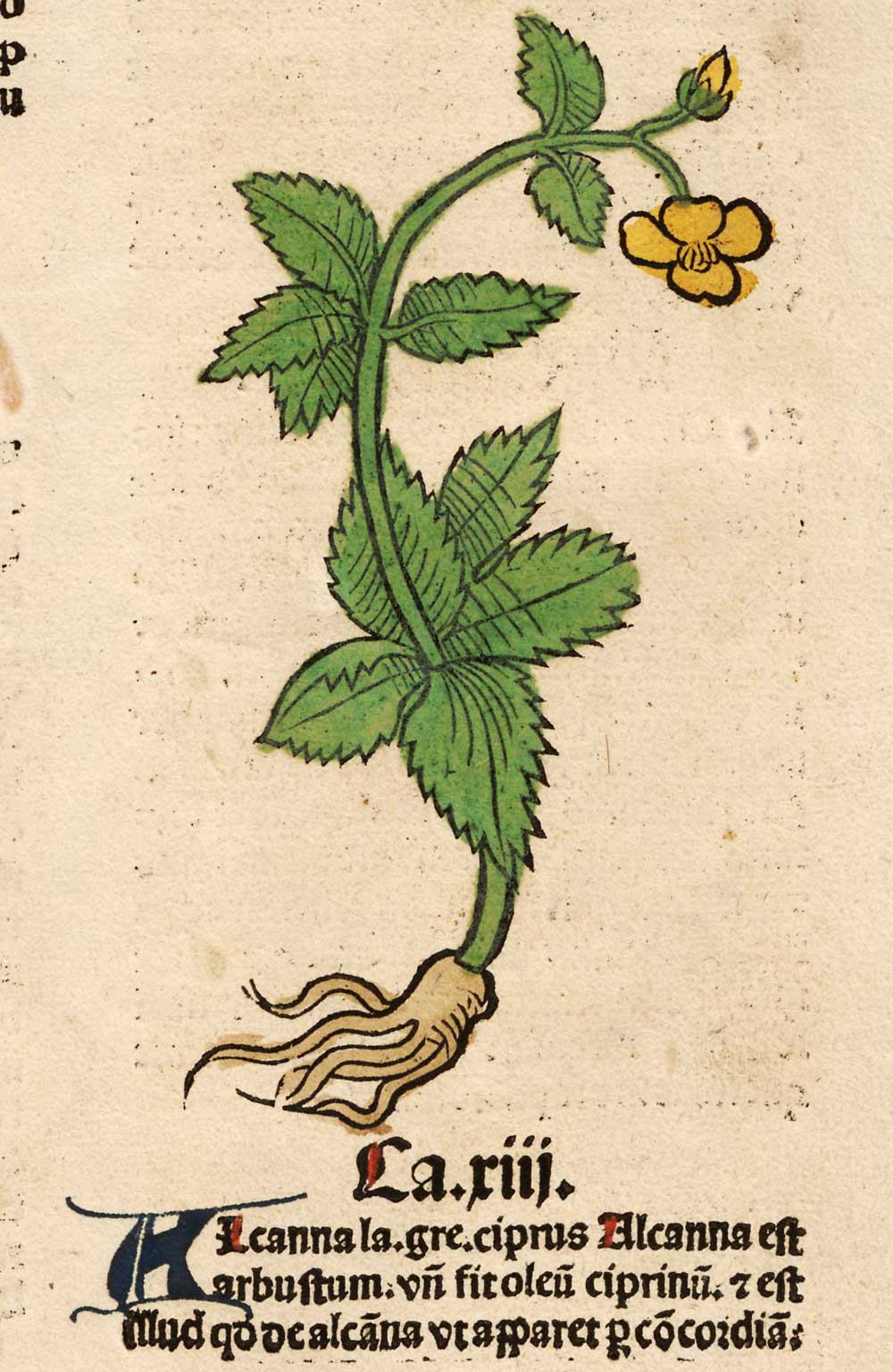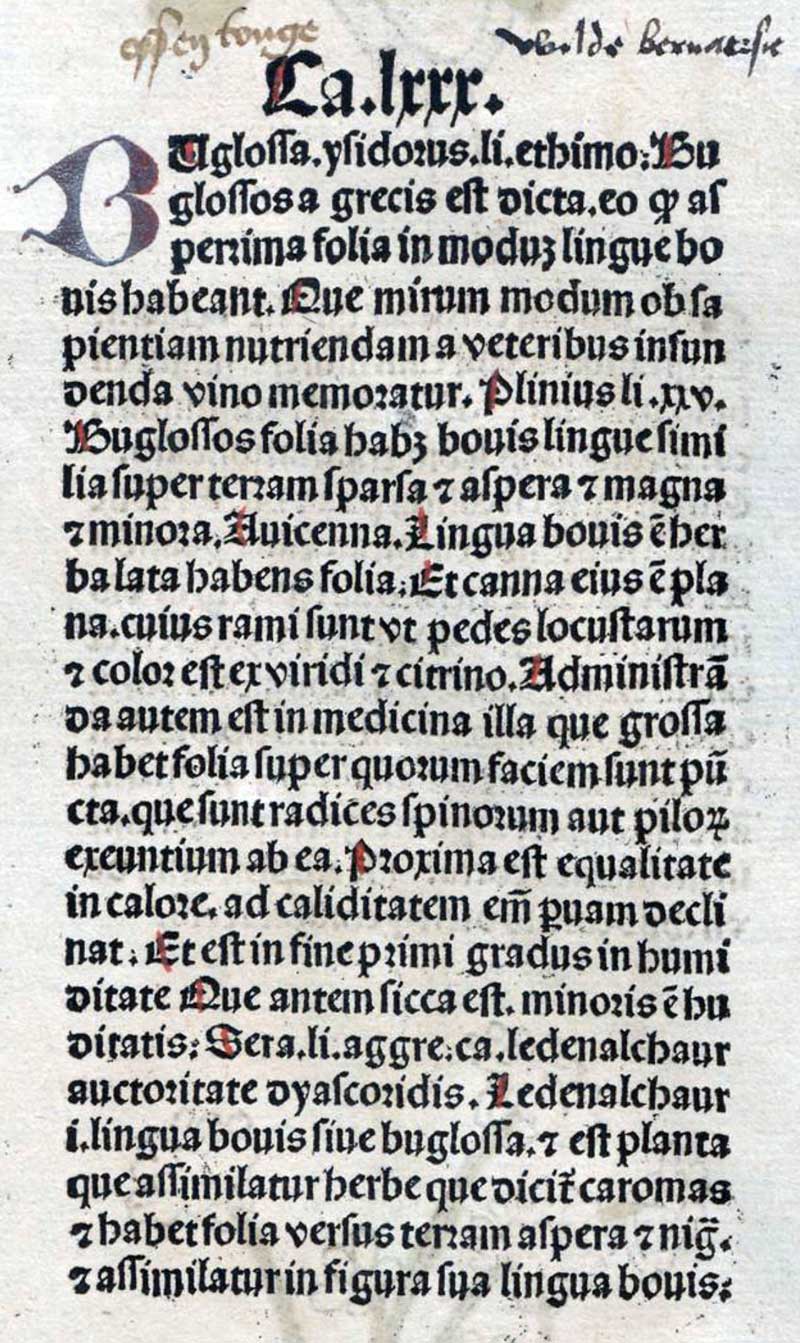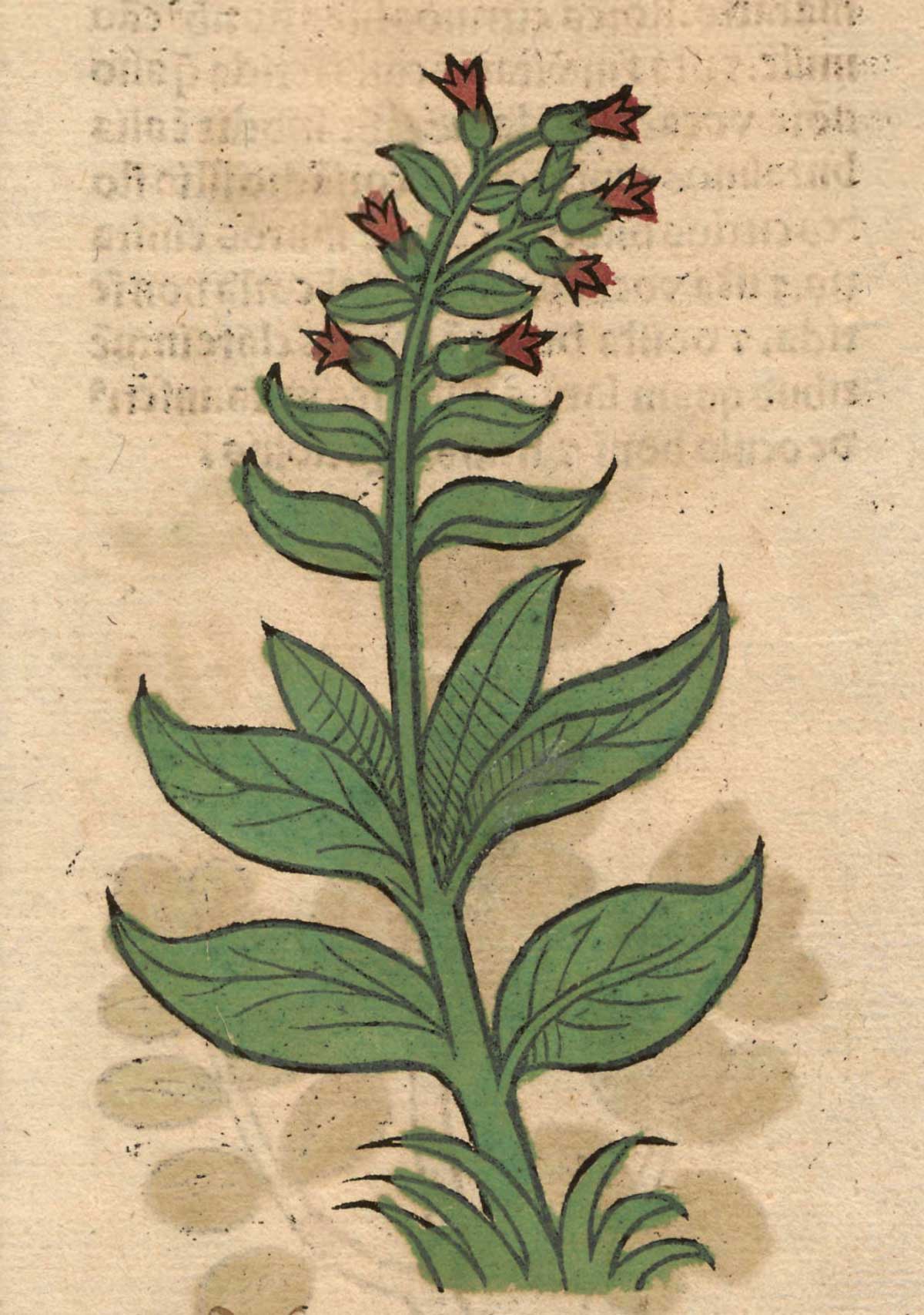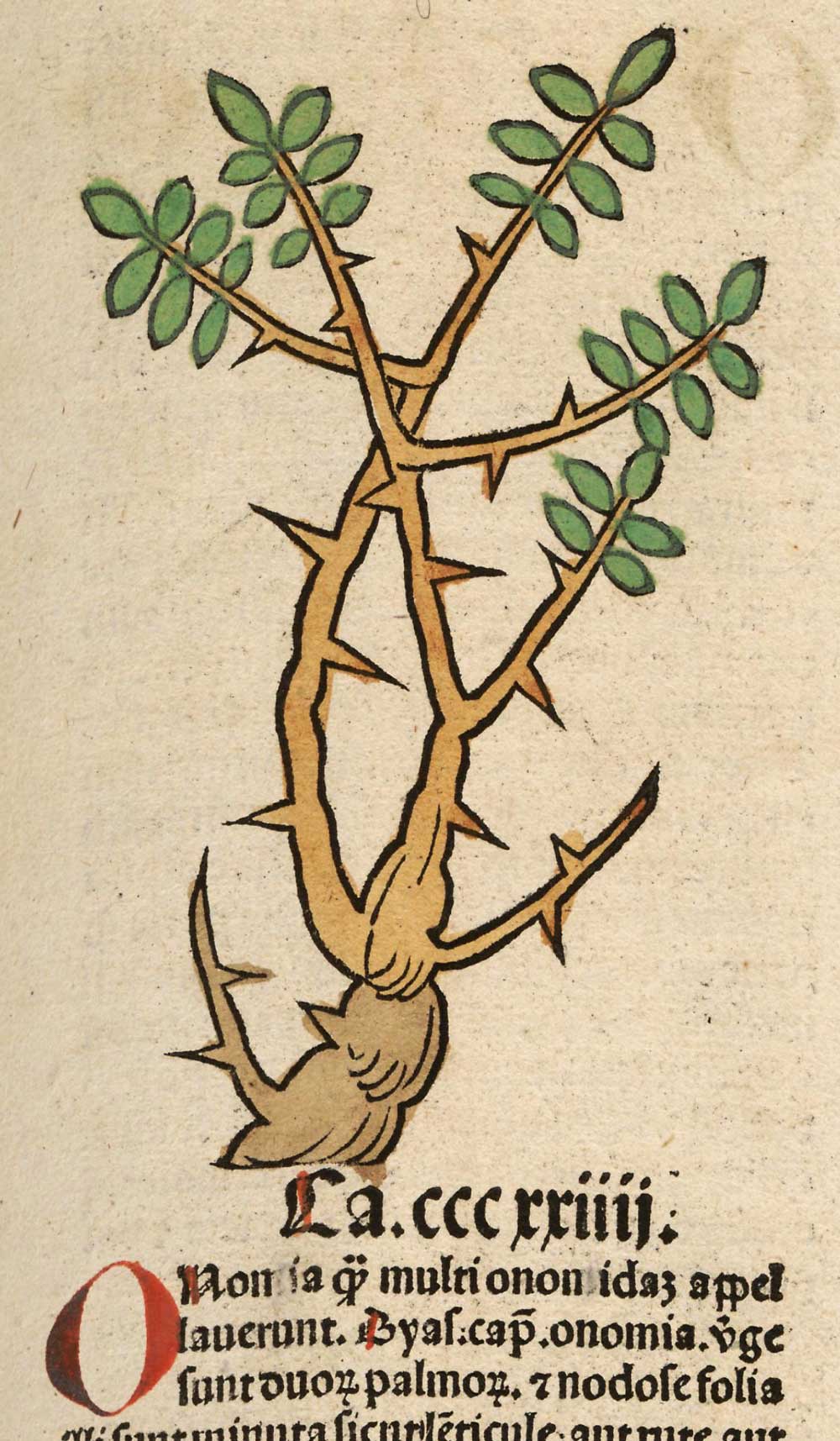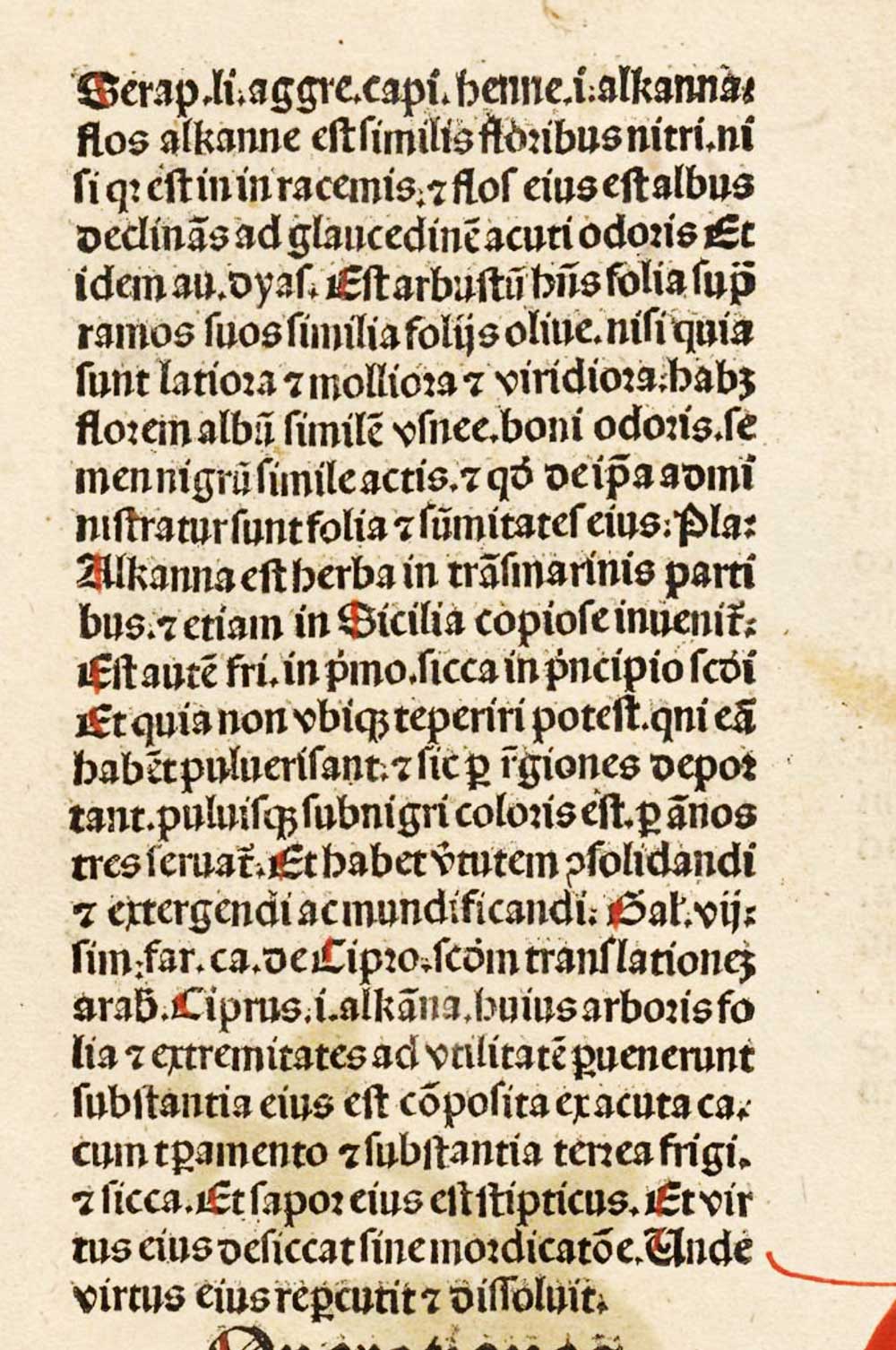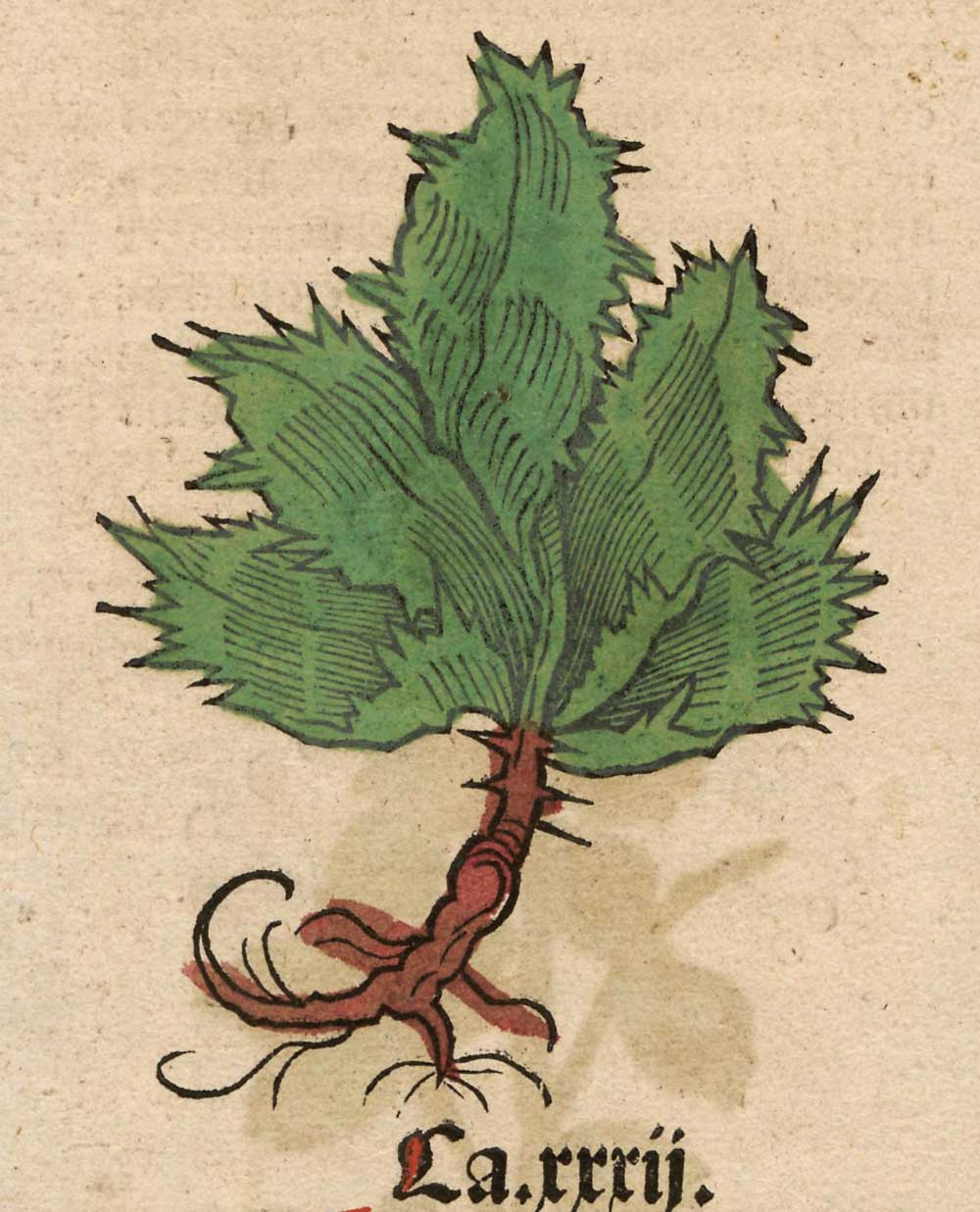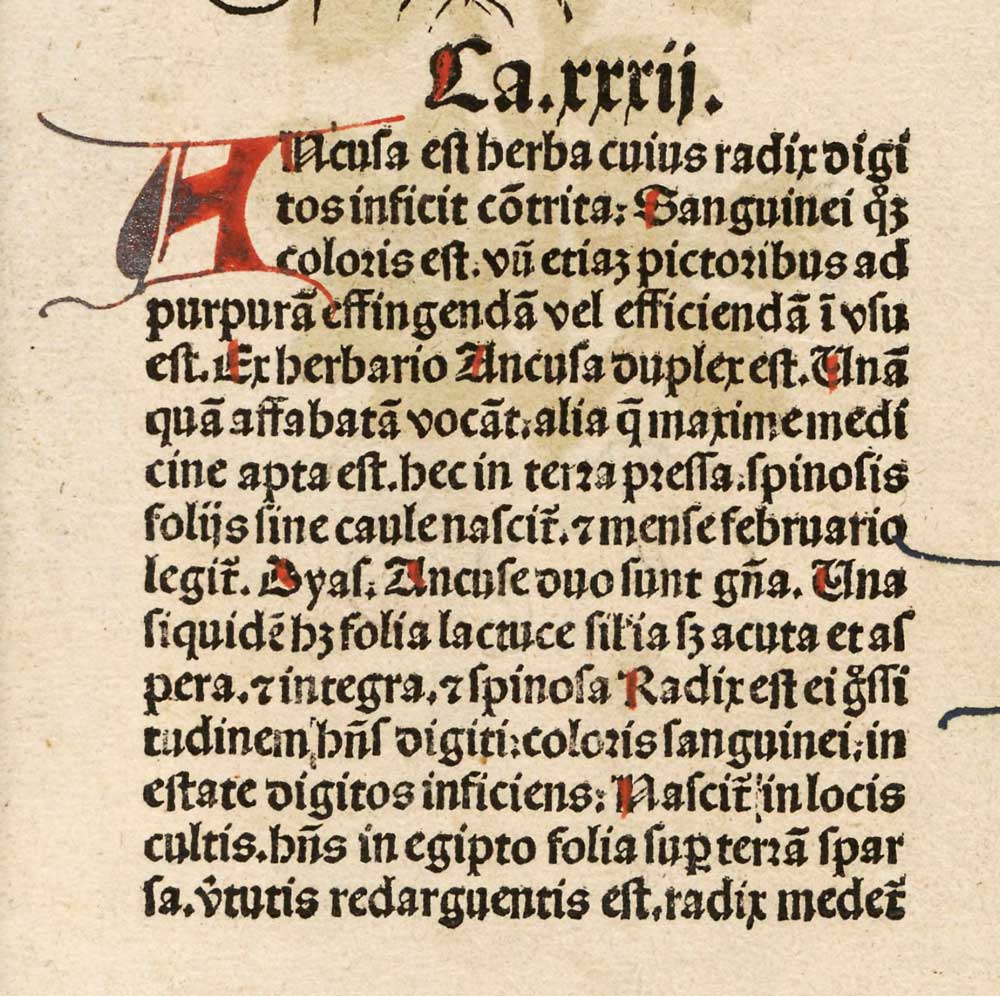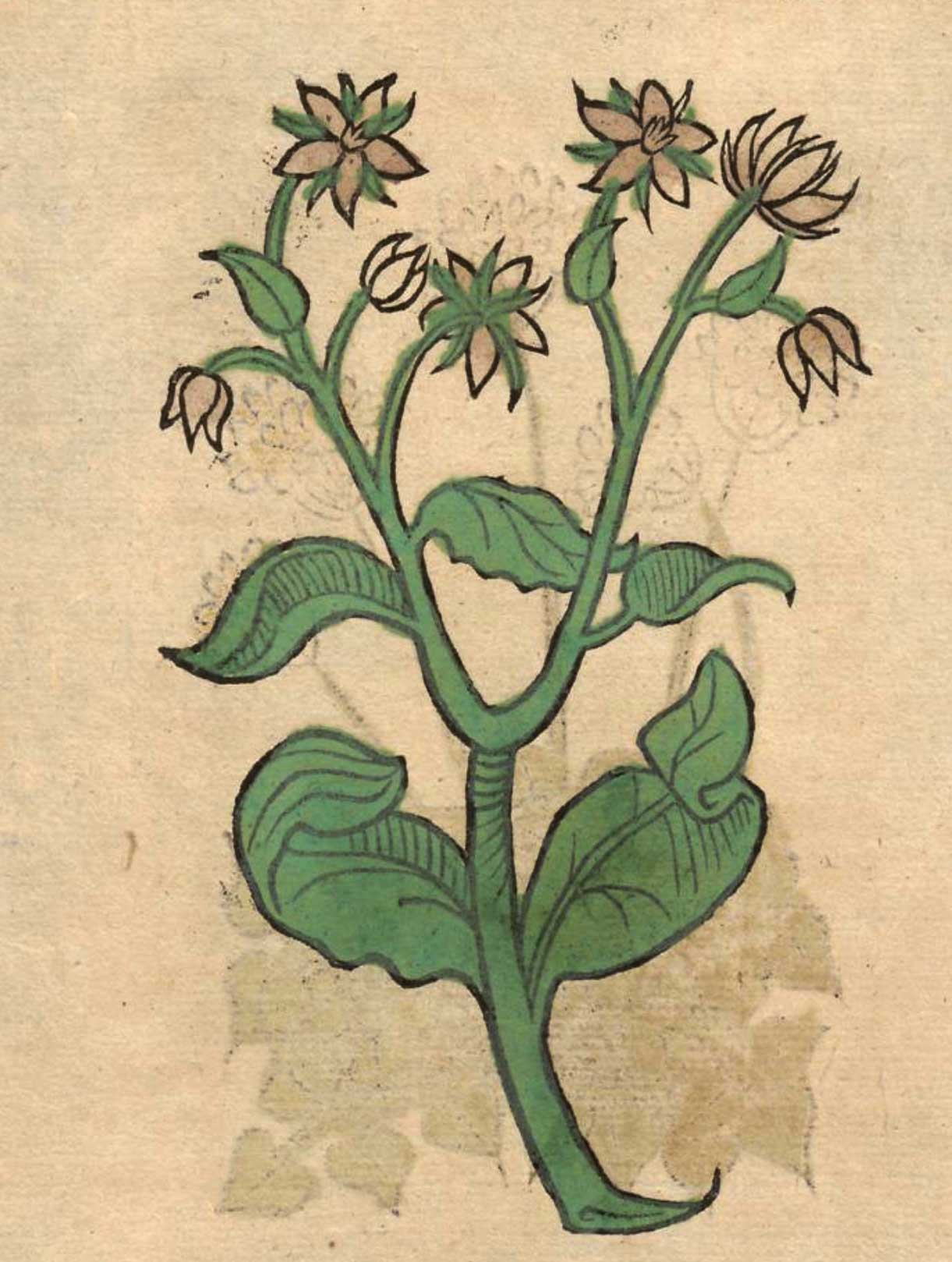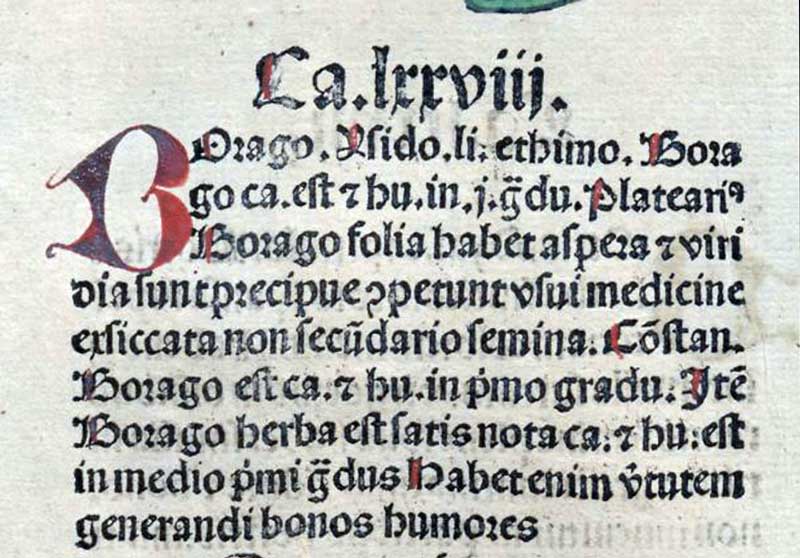The leaves of Pantagruelion are rough, like those of orcanet.
Notes
Alcanna
Buglossa (text)
Buglossa
Onon
Alcanna (text)
Ancusa
Ancusa (text)
Borago
Borago (text)
bugloss
Nicander, Theriaca 541. Consider now the excellent root of albicius’s bugloss: its prickly leaves grow ever thick upon it.
anchusa, orcanet
Et anchusae radix in usu est, digitali crassitudine. finditur papyri modo manusque inficit sanguineo colore, praeparat lanas pretiosis coloribus. sanat ulcera in cerato, praecipue senum, item adusta. liquari non potest in aqua, oleo dissolvitur, idque sincerae experimentum est. datur et ad renium dolores drachma eius potui in vino aut, si febris sit, in decocto balani, item iocinerum vitiis et lienis et bile subfusis. lepris et lentigini inlinitur ex aceto. folia trita cum melle et farina luxatis inponuntur, et pota drachmis duabus in mulso alvum sistunt. pulices necare radix in aqua decocta traditur.
Alkanet [Anchusa officinalis] too has a useful root, which is of the thickness of a finger. It is split into small divisions like the papyrus, and stains the hands the colour of blood; it prepares wools for costly colours. Applied in wax ointment it heals ulcerous sores, especially those of the aged, and also burns. Insoluble in water, it dissolves in oil, and this is the test of genuineness. A drachma of it is given to be taken in wine for pains in the kidneys, or if there be fever, in a decoction of behen nut; also for affections of the liver and spleen and for violent biliousness. It is applied in vinegar to leprous sores and freckles. The pounded leaves, with honey and meal, are applied to sprains, and doses of two drachmae in honey wine check looseness of the bowels. Fleas are said to be killed by a decoction of the root in water.
anchusa, bugloss
Dioscorides 3.147 Onosma [Onosma sp] Onosma, but some call it Osmas, some Philonitis, some Ononis, hath the leaves like to this of Anchusa.
[Onosma, Gk onos, ass, osma, odor. ]
Dioscorides 4.23 Anchousa [Anchusa tinctoria, Alkanet] Anchusa, which some call Calyx, some Onoclea [Some Catanchusa, some Lybica, some Archibellion, some Onophyllon, some Porphyris, some Mydusa, some Salyx, some Nonea, ye Africans Buinesath] hath leaves like to the sharp-leaved lettuce, rough, sharp, black, many, on every side of ye root joining to ye earth, prickly. The root, ye thickness of a finger of ye colour almost of blood in ye summer becoming severs, dyeing of the hands.
Dioscorides 4.128 Bouglosson [Anchusa paniculata] Buglossoum [which ye Magi call genitura felis, Osthanes Tzanuchi; ye Egyptians Antuenin Besor, ye Romans Lingua Bovis, some Libanis, ye Africans Ansanaph, it grows in plain & vaporiferous places, but it is gathered in ye month July..] is like to Veberbascum, but it thath a leaf lying on ye ground, both rough, & blacker, like to ye tongue of an ox, which being put into wine is thought to be a cause of mirth.
Borage, Alkanet, Buglosse
Gerard 2.123. Of Borage. Borage hath broad leavs, rough, lying flat upon the ground, of a blacke or swart green colour. Borage is called in shops Borago: Pliny calleth it Euphrosinum, because it makes a man merry and joyfull: which thing also the old verse concerning Borage doth testifie:
Ego Borago gaudia semper ago.
I Borage bring alwaies
Those of our time do use the floures in sallads, to exhilerate and make the minde glad. There be also many things made of them, used for the comfort of the heart, to drive away sorrow, & increase the joy of the minde. The leaves and floures or Borrage put into wine make men and women glad and merry, driving away all sadnesse, dulnesse, and melancholy, as Dioscorides and Pliny affirme. Syrrup made of the floures of Borrage comforteth the heart, purgeth melancholy, and quieteth the phrenticke or lunaticke person.
Gerard 2.124. Of Alkanet or wilde Buglosse. These herbs comprehended under the name of Anchusa, were so called of the Greeke word that is, to colour or paint any thing: Whereupon those plants were called Anchusa, of that flourishing and bright red colour which is in the root, even as red as pure and cleare bloud.
The first kind of Alkanet hath many leaves like Echium or small Buglosse, covered over with a pricky hoarinesse, having commonly but one stalke, which is round, rough, and a cubit high. The second kinde of Anchusa or Alkanet is of greater beauty and estimation than the first, the branches are lesse and more bushy in the top; it hath also greater plenty of leavs, and those more woolly or hairy.
John of Ardern hath set down a composition called Sanguis Veneris, which is most singular in deep punctures or wounds made with thrusts, as follows: take of oile olive a pint, the root of Alkanet two ounces, earth worms purged, in number twenty, boile them together & keep it to the use aforesaid. The Gentlewomen of France do paint their faces with these roots, as it is said.
The anchusa of Pliny 22.23, 22.25.
orcanette
Urquhart here has “the orchanet, bugloss, henna or puccoon.”
orcanette
Nome donné communément à deux Borraginées tinctoriales du midi: Onosma echiödes L. et Anchusa tinctoria L. ; celle-ci est l’anchusa de Pline (XXII, 23). Toutes deux ont les feuilles hérissées de poils rudes. (Paul Delaunay)
orcanet
Plante tinctoriale du Midi, aux feuilles hérissées de poils rudes.
orcanet
orcanet. Forms: orchanet, orcanet, orkanet, orcanette. [adopted from Old French orcanette, altered from arcanette, diminutive of arcanne (Cotgrave), for Old French alcanne (15th c. in Hatzfeld and Darmesteter, Dictionnaire général de la langue française), adaptation of medieval Latin alkanna, whence the parallel form alkanet.]
The plant Alkanna tinctoria, or the dye obtained from it: = alkanet.
1548 William Turner The names of herbes in Greke, Latin, Englische, Duche, and Frenche, Anchusa… may be named in englishe wilde Buglos or orchanet, as the french men do.
1601 Philemon Holland, translator Pliny’s History of the world, commonly called the Natural historie I. 381 But those that haue the root of Orcanet in them, need no salt.
orcanet
The orcanette and other boraginaceous plants have a rough leaf.
boraginaceous – Probably, accodring to Dietz, from burra, rough hair, short wool, in reference to the roughness of the foliage.
Borage – A genus of plants, giving its name to a natural order (Boraginaceae), specifically the common British species (Borago officinalis); it was formerly much esteemed as a cordial, and is still largely used in making cool tankard, claret cup, etc.
Borage is one of the four cordial flowers.
Borage always brings courage.
